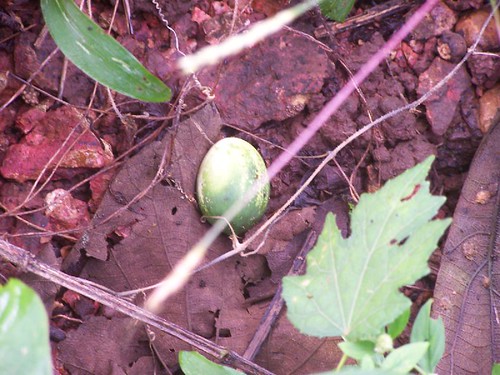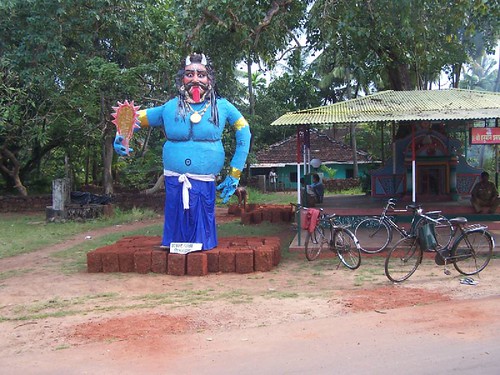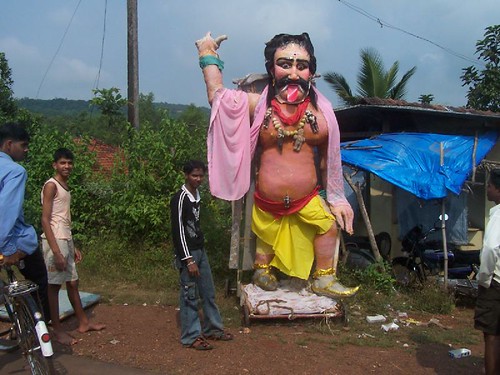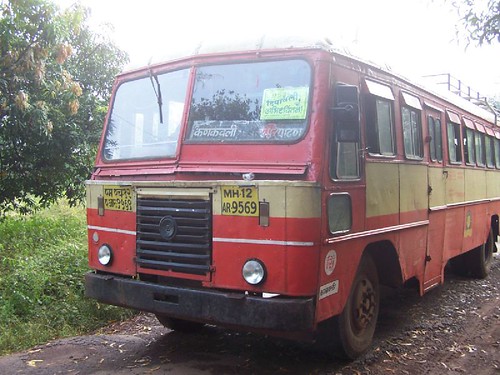 This year, we spent the first two days of Diwali in my ancestral village in the Konkan.
This year, we spent the first two days of Diwali in my ancestral village in the Konkan.Diwali in the Konkan is quite unencumbered with some of the usual mundane urban customs of overspending and ostentatiousness, but it does have its own special rituals. This was my second Diwali in my village - the first being many many years ago.
Narak Chaturdashi is locally called Chav Divas (चाव दिवस) - the idea being you chav (bite down) on poha (puffed rice). Rice being the only major crop in this area, pohe represents a varition on the usual rice preparations, I suppose.
 The other interesting custom which we follow even at home in Pune has to do with a small bitter melon/gourd. Apparently Krishna/Satyabhama killed Narakasura by crushing him with the thumb of the left foot. After a ritualistic bath with Uthana, we went out and crushed this small gourd till it split open. You then taste the seed which is extremely bitter to remind you that life is sweet and not so sweet sometimes (my interpretation)
The other interesting custom which we follow even at home in Pune has to do with a small bitter melon/gourd. Apparently Krishna/Satyabhama killed Narakasura by crushing him with the thumb of the left foot. After a ritualistic bath with Uthana, we went out and crushed this small gourd till it split open. You then taste the seed which is extremely bitter to remind you that life is sweet and not so sweet sometimes (my interpretation)On our way from Malvan to my village, I came across colorful effigies about 6 feet tall, made of straw, and other combustible material. These represent Narakasura. From my limited view, these are started many days in advance, being built as and when time permits (when the village boys find time from their other farming activities). These effigies are filled with fire crackers and set alight in the village commons amidst general din and noise.


Final image from the Kokani Diwali was the State Transport bus (Laal Khatara, as it is fondly known) with a small poster on its window wishing everyone a Happy Diwali. Nice touch.


2 comments:
Hey! Very interesting post. Shows how much variation (variety!) we have within India even for the same festivals. I have never seen effigies made of Narakasura elsewhere. The only similar sight is during Dessehra in North India when they burn down effigies of Ravana, etc.
Hi Shantanu,
Indeed the Narakasura effigies were a novelty to me as well - my first thought was how akin to the Ravana, Kumbhakarna, Meghnaad effigies during Raam Lila at Dussehra.
Unfortunately I could not get more pictures, but definitely a different tradition
Thanks for visiting
Post a Comment